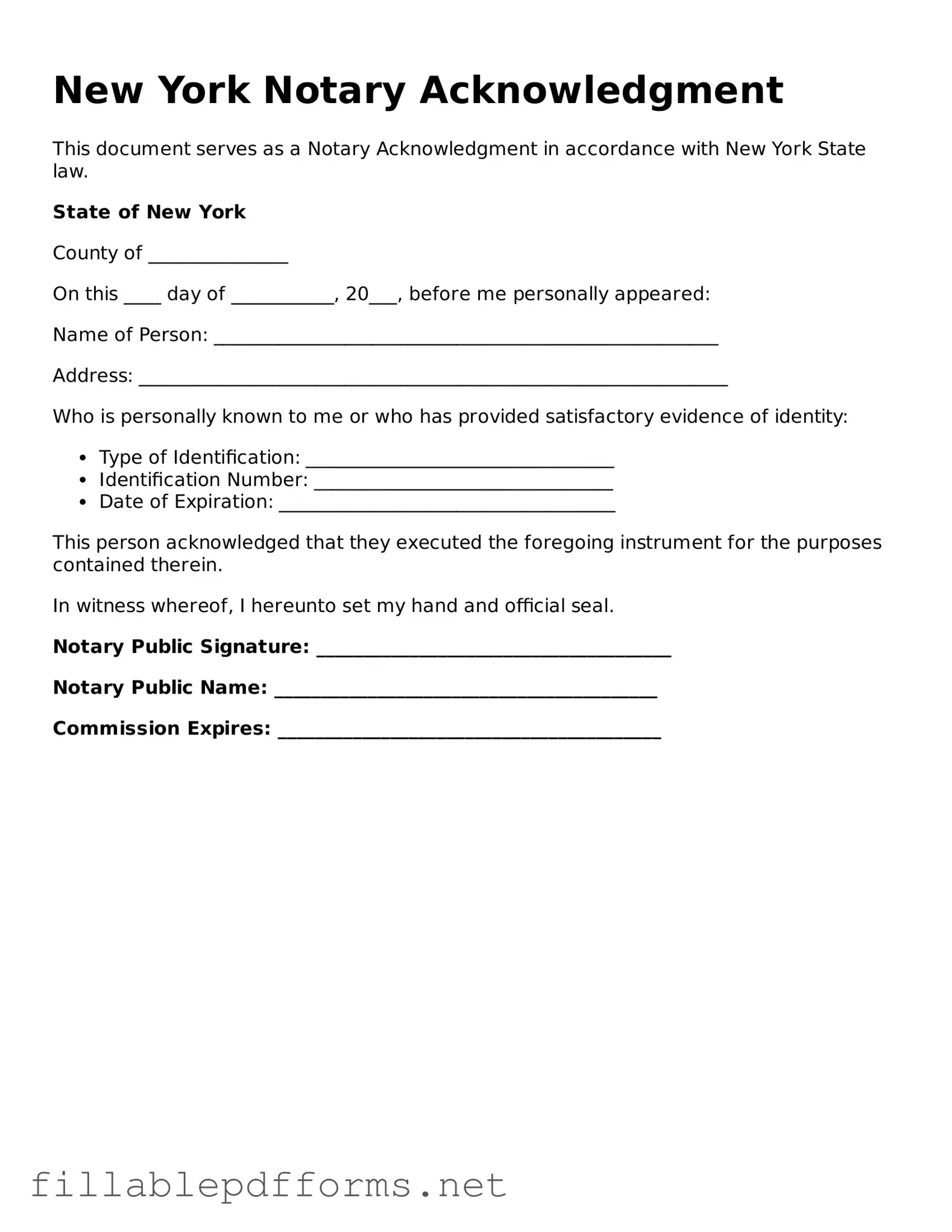The New York Notary Acknowledgment form plays a vital role in the notarization process, serving as a formal declaration that a specific individual has willingly signed a document in the presence of a notary public. This form is essential for various legal transactions, including property transfers, contracts, and affidavits. It helps to ensure that the signer's identity is verified and that they understand the contents of the document they are signing. The form typically includes key information such as the name of the signer, the date of the acknowledgment, and the notary's official seal. Additionally, it may require the notary to provide their signature and commission details, affirming their authority to perform the notarization. By adhering to the requirements outlined in the form, individuals can help safeguard against fraud and ensure the legality of their documents. Understanding the nuances of the New York Notary Acknowledgment form is crucial for anyone engaged in legal transactions within the state, as it can significantly impact the enforceability of the signed documents.
